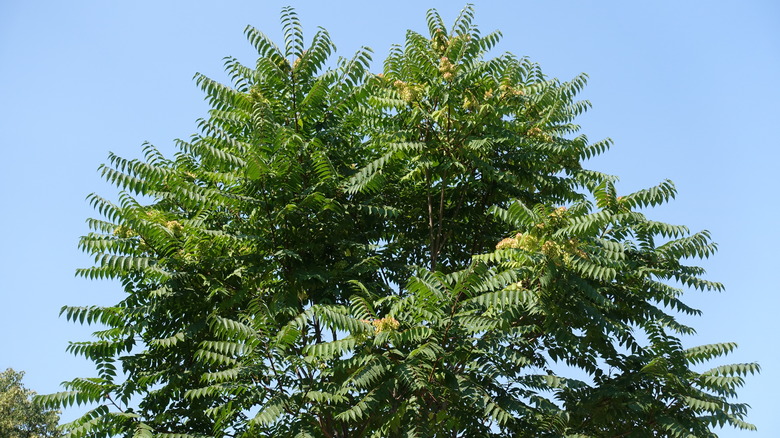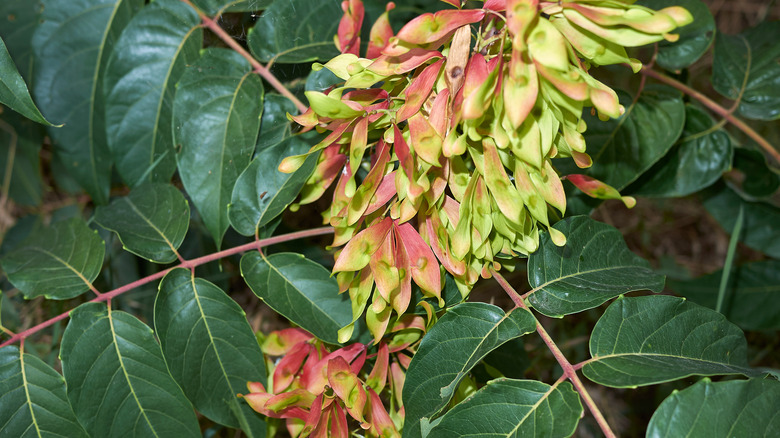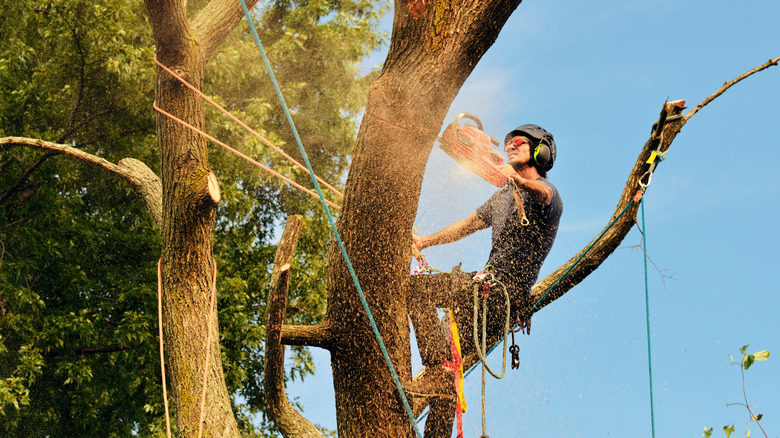Think Twice About Planting A Tree Of Heaven Anywhere Near Your Home (And How To Get Rid Of It)
As beautiful and divine as it sounds, the tree of heaven is not something that you want to see staking claim on your property. It's considered to be a problematic invasive species because it's aggressive in both its growth and reproduction cycle. This plant produces an excessive amount of seeds, forms dense thickets that outcompete native species, and releases a chemical into the soil that is toxic to surrounding plants. The Tree of Heaven disrupts the balance of native ecosystems and biodiversity and has the potential to entirely kill off native plant and animal species. It's also a favorite of the also highly invasive lanternfly.
The negative reach of the tree of heaven is not limited to the surrounding environment. It also has an impact on people, too. The tree's aggressive root system can cause damage to pavement, sewers, and building foundations. It's also known to produce an abundance of pollen, which can cause allergies and hay fever. Reports state that coming in contact with the leaves, bark, seeds, and pretty much all the plant can cause skin inflammation and dermatitis. So it goes without saying that the tree of heaven is no angel.
How to identify a tree of heaven
The tree of heaven can be identified by its distinct bark. Mature trees have bark that's rough and sort of resembles the skin of a cantaloupe. Younger trees have smoother bark that gradually becomes rougher and darker as they grow bigger and more menacing. Another key characteristic is its large compound leaves. Each leaf consists of 11 or more lance-shaped leaflets that are arranged in a feather-like pattern. These mini leaves have smooth edges and can grow between one and three feet long. During late spring or early summer, the tree of heaven will produce a branch of clustered yellow to light green flowers.
This is a dioecious, which means it has separate male and female trees. The female tree of heaven produces clusters of small, inconspicuous greenish-yellow or light green flowers. Male trees produce flowers that are said to pack a putrid scent. After the flowering stage, the female flowers will develop into winged seed pods called samaras, or helicopter seeds. These pods contain a single seed and mature in late summer or fall. A single tree of heaven can produce over 300,000 seeds per season.
How to remove a tree of heaven
The tree of heaven is the gift that keeps on giving, so for mature trees, it's best to call in the professionals for removal. An arborist will cut down the tree as close to the ground as possible and then clean off any remaining sawdust from the leftover stump. They'll then proceed to cut the surface of the tree in a crisscross pattern to prevent further growth. This is promptly followed by an application of herbicide, like glyphosate. This has to be done within the latter half of the summer season so that the herbicide can penetrate into the tissue before the stump calluses over. The arborist will haul away the tree pieces for proper disposal, and may come back to your property every few weeks to months to make sure that there aren't any new sprouts, suckers, or seedlings making a miraculous appearance.
After the tree of heaven has been taken down, you'll want to keep an eye on any exposed ground on your property. If you find any seedlings, promptly pull them out before any taproots begin to develop. This is the best way to maintain a yard free from this dubious tree.


